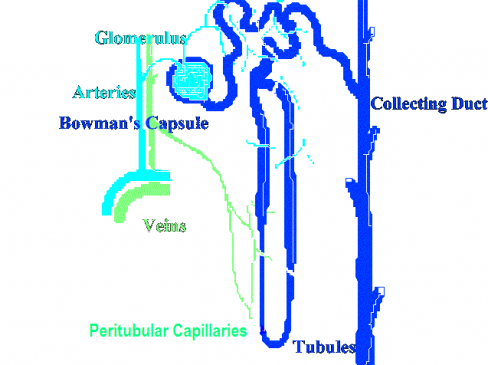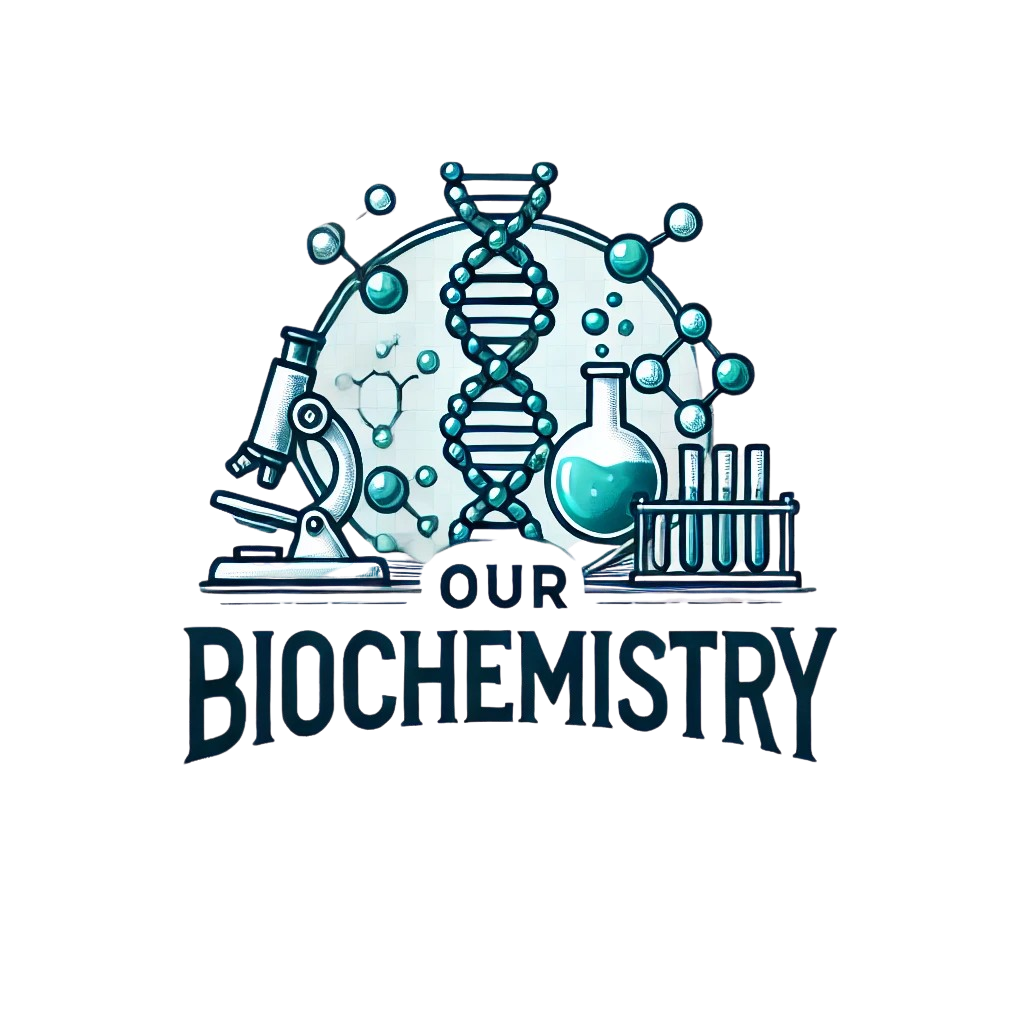Introduction
Renal clearance is a measurement to analyze the functions of the kidney. By definition, clearance is the volume of plasma from which the excretion completely removes a substance through the kidney in a given amount of time (usually a minute). For example, the clearance for urea is 75 ml/min. This means that the kidney removes all of the urea in 75 ml of plasma in one minute.
Every minute approximately 625 ml of plasma flows to the kidney. This is the renal plasma flow. Some of the fluid leaves the kidney in the plasma while some leave the kidney as urine. There are only two ways for a substance to end up in the urine: either it is filtered at the glomerulus and then not reabsorbed from the tubules, or the substance is not filtered but is secreted by the peritubular capillaries into the tubules. In either instance, the substance ends up in the collecting duct and is excreted into the urine (figure).

Figure- showing the structure of a nephron.
Renal plasm flow and clearance
Of the 625 ml/min of plasma that goes to the glomerulus, 125 ml/min is filtered into Bowman’s capsule forming the filtrate (The rate of filtration is known as the Glomerular filtration rate- GFR). The remaining 500 ml/min enters into the peritubular capillaries. Of the 125 ml/min filtered, almost all of the water in this fluid is reabsorbed back into the blood. The composition of the filtrate in Bowman’s capsule is identical to the composition of the plasma except that the filtrate has no or very little amount of proteins.
Any substance, which is freely filtered by the glomerulus and is neither reabsorbed nor secreted, ends up in the urine. Thus, all the plasma that gets filtered is cleared of that substance (that is, all the substance in the filtrate gets excreted) while the substance that is not filtered (and thus remains in the plasma) is not excreted. Since clearance is defined as the volume of plasma ‘cleared’ of a substance in 1 min, the clearance for that substance would be 125 ml/min. This means that out of the 625 ml of plasma that come to the kidney in one minute, 125 ml (the fraction that is filtered) has all of the substance removed from it in that minute, the other 500 ml (the fraction that is not filtered) keeps it as there is no way for the substance get into the urine as it is not secreted.
![]()
The GFR is typically recorded in units of volume per time, e.g., milliliters per minute ml/min.
Inulin Clearance versus glucose clearance
The compound inulin is cleared in the same as mentioned above. All of the plasma that is filtered is cleared of inulin so that if one has to measure the clearance of inulin, it would be equal the amount of plasma filtered in a minute, the glomerular filtration rate. Therefore, the clearance of inulin is equal to the glomerular filtration rate, the volume of plasma filtered in one minute. Inulin is not a normal metabolite of the body; it is in fact administered to determine the functional status of the kidney
The clearance of any other substance is not similar to the clearance of inulin. For example-Glucose, like inulin, is freely filtered. Thus, glucose is present in Bowman’s Capsule. However, glucose does not appear in urine because glucose is completely reabsorbed as it passes through the tubules. Inulin is not reabsorbed. This means all of the glucose that comes to the kidney is saved and leaves the kidney in the plasma and that no glucose is excreted into the urine. The clearance of glucose is, therefore, 0 ml/min as no plasma has its glucose removed as it passes through the kidney. This would be true for any substance that is completely reabsorbed. Hence if the clearance of Tryptophan (an amino acid) is 0 ml/min, it can be inferred that Tryptophan must be completely reabsorbed (as long as it is freely filtered).
PAH Clearance and renal plasma flow
Taking the example of another substance, Para amino Hippuric acid (PAH), It is freely filtered, not reabsorbed, and is completely secreted by the kidney. Thus, all of the PAH entering the kidney ends up in the urine, both the PAH that is filtered and that that is not filtered. This means that all the plasma entering the kidneys would be cleared of PAH. Since the renal plasma flow is about 625 ml/min in a ‘normal’ kidney, the clearance of PAH must be 625 ml/min. Therefore, the PAH clearance is equal to the renal plasma flow. PAH clearance is used to determine whether the kidneys have an adequate plasma flow.
Now, if the clearance of a substance is 625 ml/min, this would suggest that the kidney completely secretes this substance (that is, the kidney ‘treats’ this substance the same as PAH which is known to be completely secreted). Using similar logic, a clearance value of 125 would suggest that the kidney neither reabsorbs nor secretes the substance, and a clearance value of 0 suggests that the kidney completely reabsorbs the substance (assuming that the substance is freely filterable in the glomerulus).
Urea clearance
The urea clearance has been measured to be 75 ml/min. What does the kidney ‘do’ with urea (does it reabsorb, secrete, or neither)? Well, if urea is completely reabsorbed, its clearance should be like that of glucose (0 ml/min) and if urea is not reabsorbed at all (and not secreted), its clearance should be 125 ml/min. Since the value of urea clearance is 75 ml/minute, which means urea is partially reabsorbed. Note that the common belief concerning kidney function is that it removes urea from the blood, yet the nephron partially reabsorbs urea! Thus, urea clearance is not a true predictor of Glomerular filtration rate as is Inulin clearance.
Creatinine clearance
In clinical practice, however, creatinine clearance or estimates of creatinine clearance based on the serum creatinine level are used to measure GFR. Creatinine is produced naturally by the body (creatinine is a break-down product of creatine phosphate, which is found in muscle). It is freely filtered by the glomerulus, but also actively secreted by the peritubular capillaries in very small amounts such that creatinine clearance overestimates actual GFR by 10-20%. This margin of error is acceptable, considering the ease with which creatinine clearance is measured. Unlike precise GFR measurements involving constant infusions of inulin, creatinine is already at a steady-state concentration in the blood, and so measuring creatinine clearance is much less cumbersome. Therefore, creatine clearance is preferred over urea and inulin clearance.
